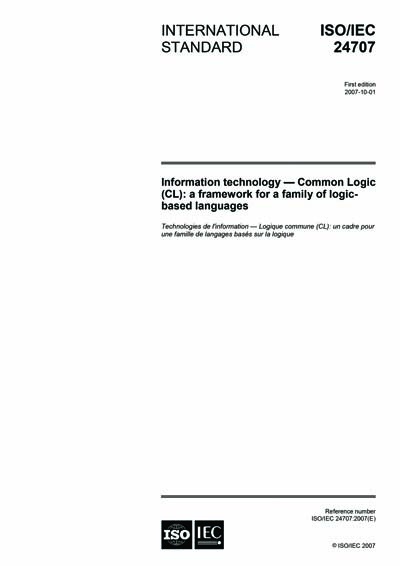Historical
ISO/IEC 24707:2007
Information technology - Common Logic (CL): a framework for a family of logic-based languages
ISO/IEC 24707:2007 defines Common Logic: a first-order logic framework intended for information exchange and transmission. The heart of the framework is a complete abstract syntax and abstract semantics for Common Logic, which provides the basis for many different concrete syntactic forms, called dialects, which conform to the syntax and semantics. Common Logic has some novel features, chief among them being a syntax which is signature-free and permits 'higher-order' constructions such as quantification over classes or relations while preserving a first-order model theory, and a semantics which allows theories to describe intensional entities such as classes or properties. It also fixes the meanings of a few conventions in widespread use, such as numerals to denote integers and quotation marks to denote character strings, and has provision for the use of datatypes and for naming, importing and transmitting content on the World Wide Web. ISO/IEC 24707:2007 defines the abstract syntax and semantics, and three concrete dialects are defined in the annexes. The three conforming dialects specified are Common Logic Interchange Format (CLIF), Conceptual Graph Interchange Format (CGIF) and XML for Common Logic (XCL).
Content Provider
International Organization for Standardization [iso]






